Idea by
Simon Fagéus
Call for ideas 2021
A Five Legged Spider
A Five Legged Spider

- Systemic changes
He fell, and broke his arm. After two months with a cast and surgical rods, he seemed to have forgotten how to use it. Once the arm was healed he just let it hang along his side, until the day a doctor pointed at it and said: Is it a spider you’ve got there?
Slowly the hand moves, as the child imagines it to be a spider moving through the landscape. Are we able to imagine how we ended up here? How the body, like society, can regenerate and create new neural pathways. How will future generations be tracing their lines, their memories, through the remnants we build, the islands we culture and the utopias we imagine? By imagining, we can transform everything, if we want to.
As of 2020, the mass of human made objects succeeds the mass of all living biomass. New artificial landmass is cultivated with super fertile corals. Artificial intelligence is evolving into an accidental mega-structure, but without territorial borders. Spiders are bound to leave traces of their presence.
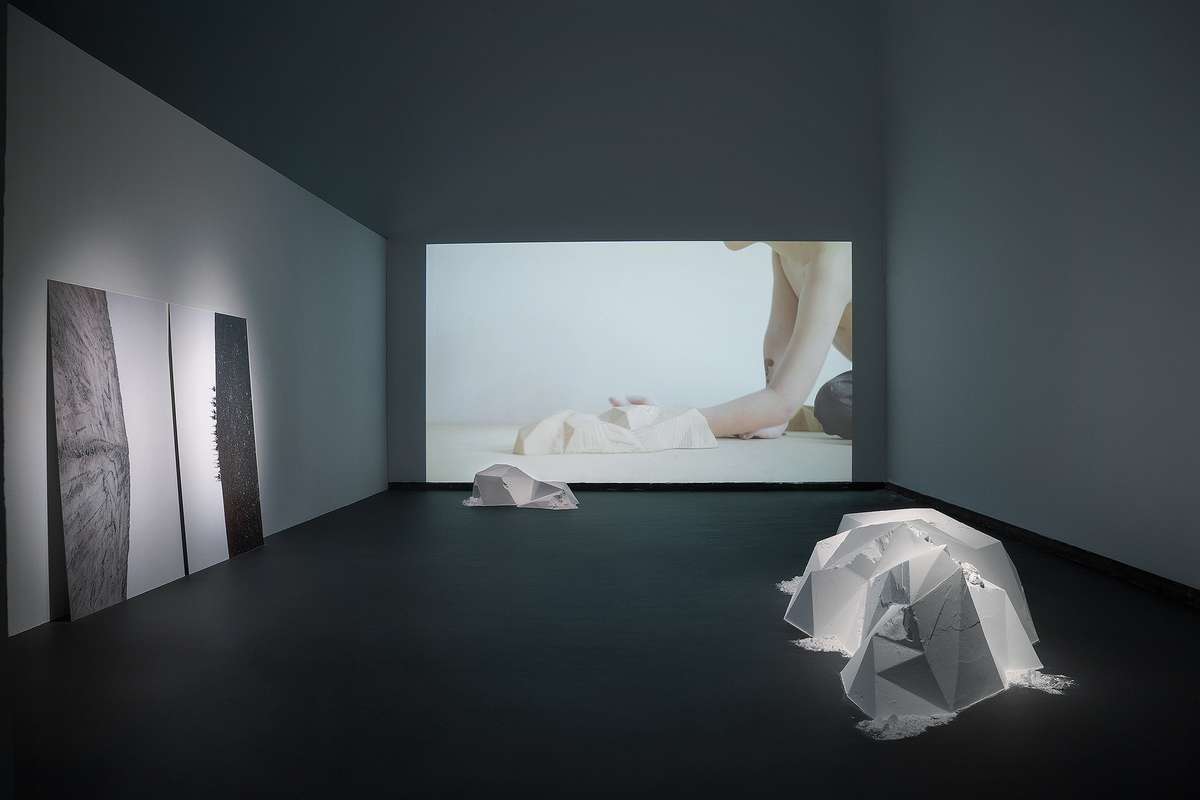
The Five Legged Spider [film still]
7.20 min.
In my film The Five-legged Spider, the boy lets his hand – this imaginary spider – explore a landscape; islands made from yakusugi, a slow-growing tree used exclusively to rebuild ancient temples. Ancient in the sense that they have existed in the same place for hundreds of years. But every twenty years they are torn down and built anew, as a way of remembering how they were first constructed, but also as an offering of labor from each generat
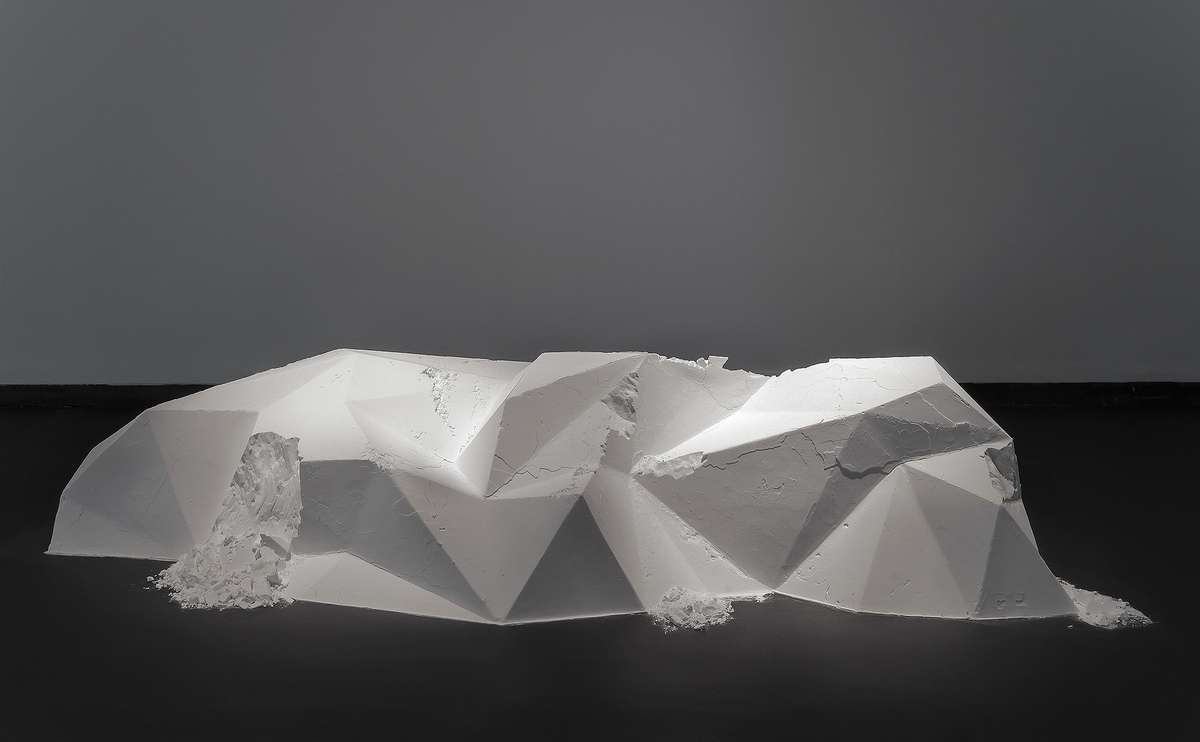
20°25′31”N 136°04′11”E (220x103x46cm)
20°25′32”N 136°04′52”E (88x50x42cm)
Nutrition powder and starch
Two tiny coral rocks, situated on a remote reef in the Pacific Ocean. Anonymous by not directly revealing their name or names, which has changed depending on the nation that has claimed ownership of them. Sea levels keep rising and waves relentlessly eat away at these rocks. The territorial waters warranted by these diminutive islets are vast and rich in fish, mineral and oil findings.
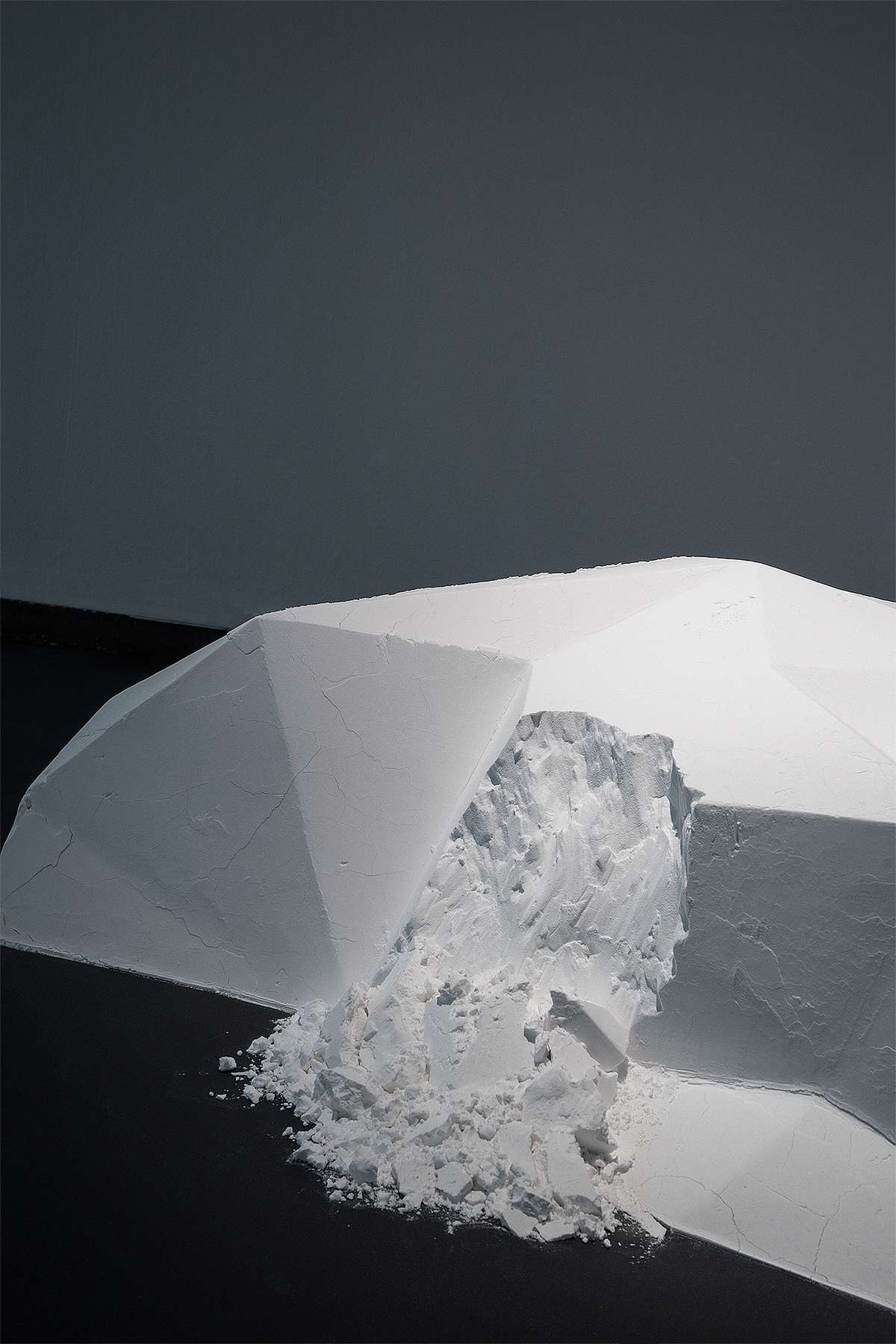
The U.N. Convention on the Law of the Sea states that only a naturally formed area of land, surrounded by water and above water at high tide, can be considered an island and thus entitle to an exclusive economic zone. The two rocks are preserved at any cost, encircled with 50 meters of concrete and a protective net of titanium wire. In the surrounding water, modified and super fertile corals are introduced. In 120 years, it will be seen whether the efforts made today have any actual effects.

Olympia / Forest of the Sea
Giclée prints mounted on dibond, 89x144 cm
Images of an island made of waste and trash. In a year Olympians will compete and perform here, then it will be turned into a forest. A forest intended to protect from annual storms and air pollution.

Installation view
A Five Legged Spider
A Five Legged Spider

- Systemic changes
He fell, and broke his arm. After two months with a cast and surgical rods, he seemed to have forgotten how to use it. Once the arm was healed he just let it hang along his side, until the day a doctor pointed at it and said: Is it a spider you’ve got there?
Slowly the hand moves, as the child imagines it to be a spider moving through the landscape. Are we able to imagine how we ended up here? How the body, like society, can regenerate and create new neural pathways. How will future generations be tracing their lines, their memories, through the remnants we build, the islands we culture and the utopias we imagine? By imagining, we can transform everything, if we want to.
As of 2020, the mass of human made objects succeeds the mass of all living biomass. New artificial landmass is cultivated with super fertile corals. Artificial intelligence is evolving into an accidental mega-structure, but without territorial borders. Spiders are bound to leave traces of their presence.
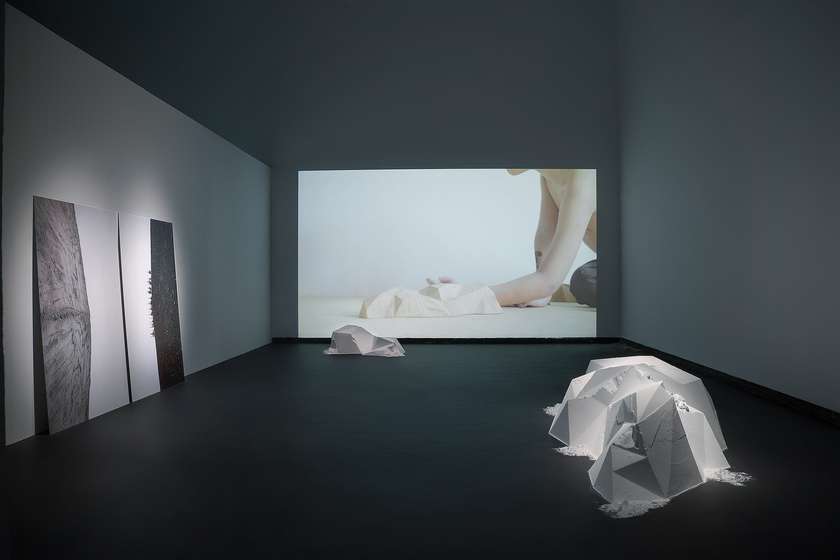
The Five Legged Spider [film still]
7.20 min.
In my film The Five-legged Spider, the boy lets his hand – this imaginary spider – explore a landscape; islands made from yakusugi, a slow-growing tree used exclusively to rebuild ancient temples. Ancient in the sense that they have existed in the same place for hundreds of years. But every twenty years they are torn down and built anew, as a way of remembering how they were first constructed, but also as an offering of labor from each generat
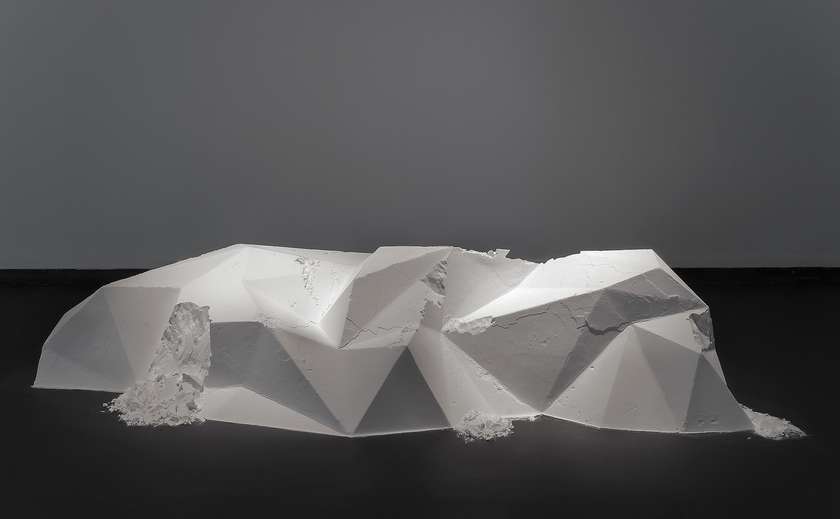
20°25′31”N 136°04′11”E (220x103x46cm)
20°25′32”N 136°04′52”E (88x50x42cm)
Nutrition powder and starch
Two tiny coral rocks, situated on a remote reef in the Pacific Ocean. Anonymous by not directly revealing their name or names, which has changed depending on the nation that has claimed ownership of them. Sea levels keep rising and waves relentlessly eat away at these rocks. The territorial waters warranted by these diminutive islets are vast and rich in fish, mineral and oil findings.
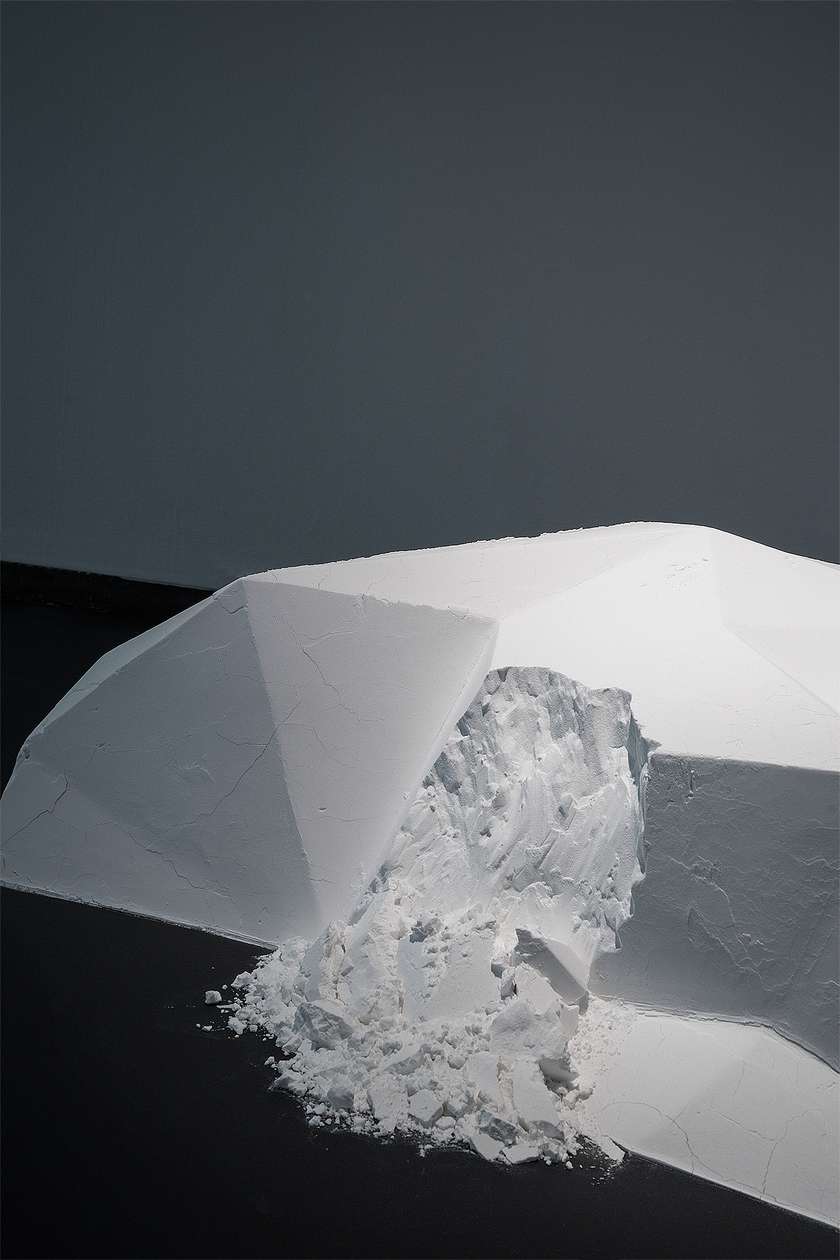
The U.N. Convention on the Law of the Sea states that only a naturally formed area of land, surrounded by water and above water at high tide, can be considered an island and thus entitle to an exclusive economic zone. The two rocks are preserved at any cost, encircled with 50 meters of concrete and a protective net of titanium wire. In the surrounding water, modified and super fertile corals are introduced. In 120 years, it will be seen whether the efforts made today have any actual effects.
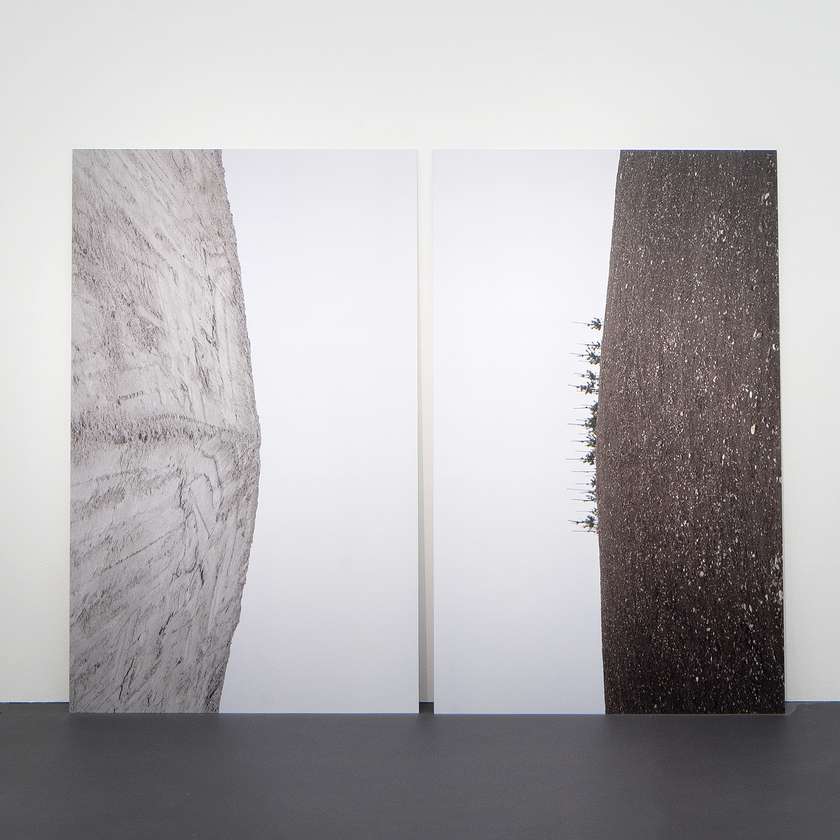
Olympia / Forest of the Sea
Giclée prints mounted on dibond, 89x144 cm
Images of an island made of waste and trash. In a year Olympians will compete and perform here, then it will be turned into a forest. A forest intended to protect from annual storms and air pollution.
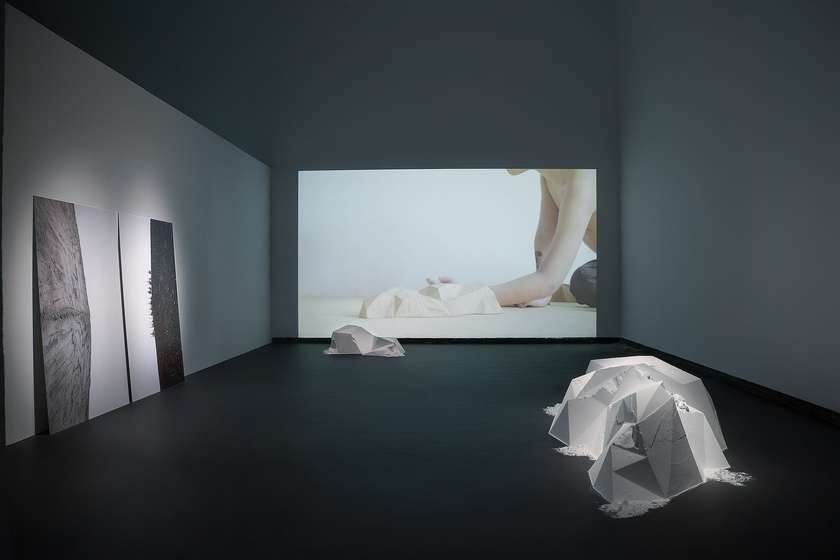
Installation view